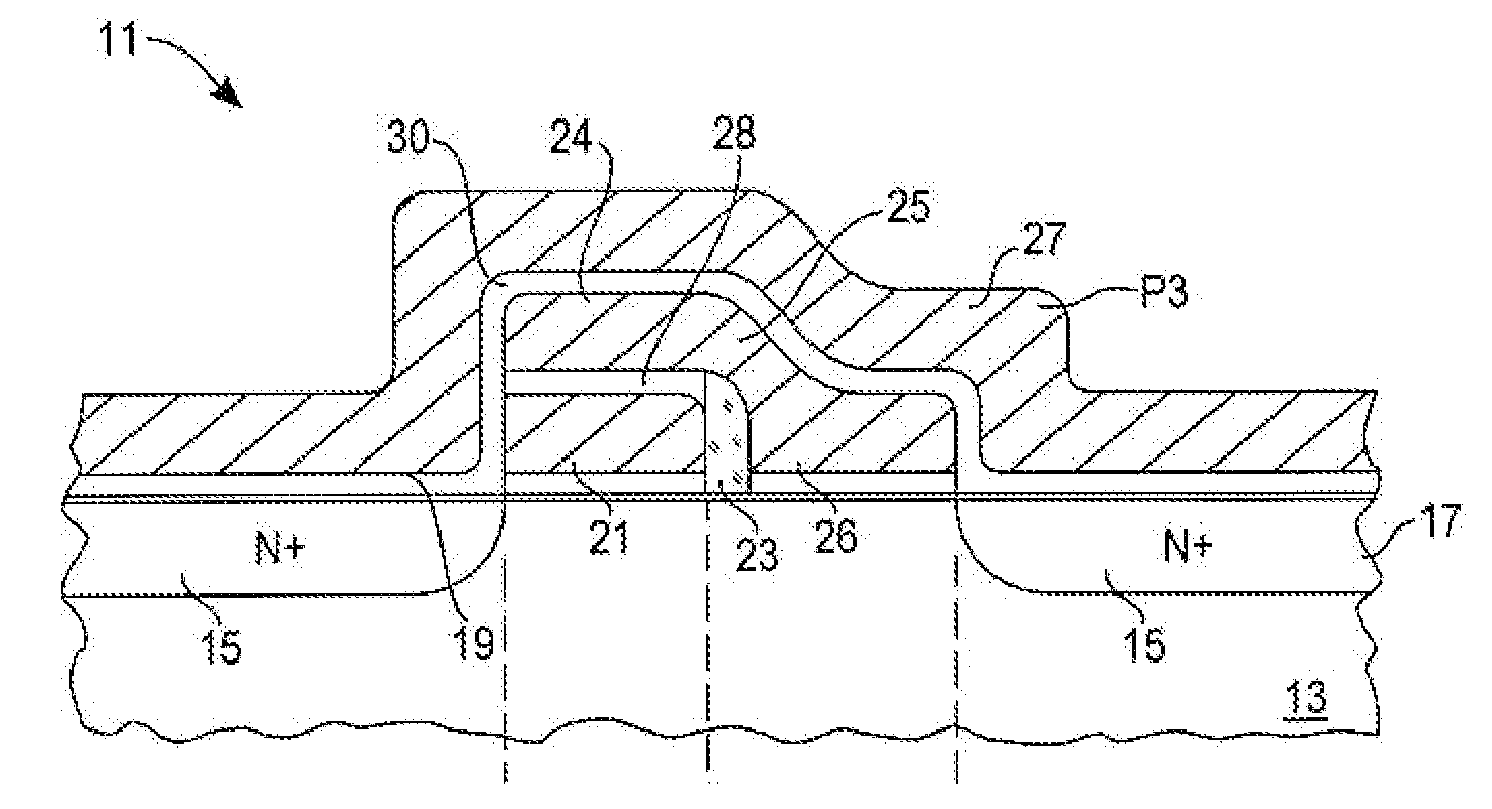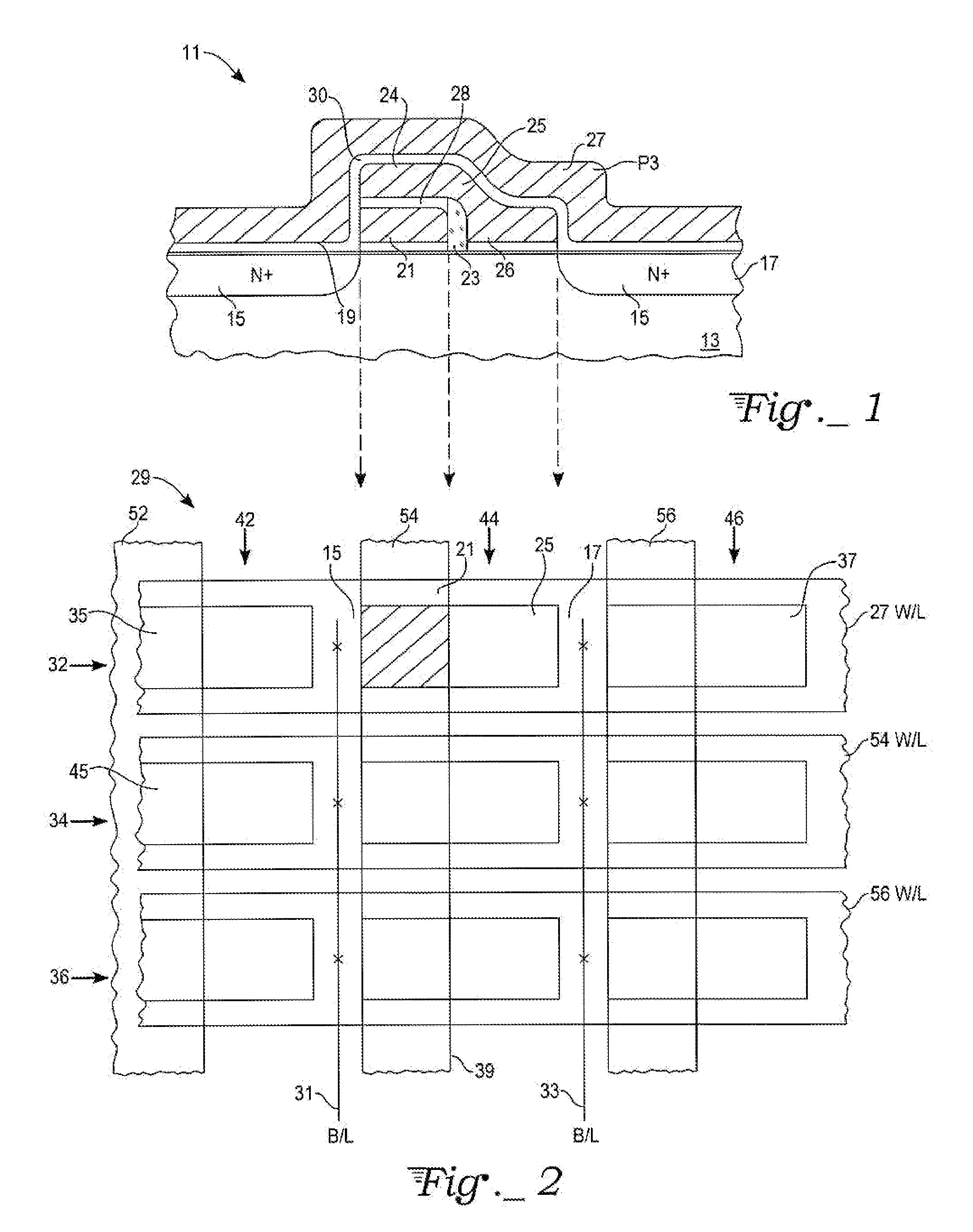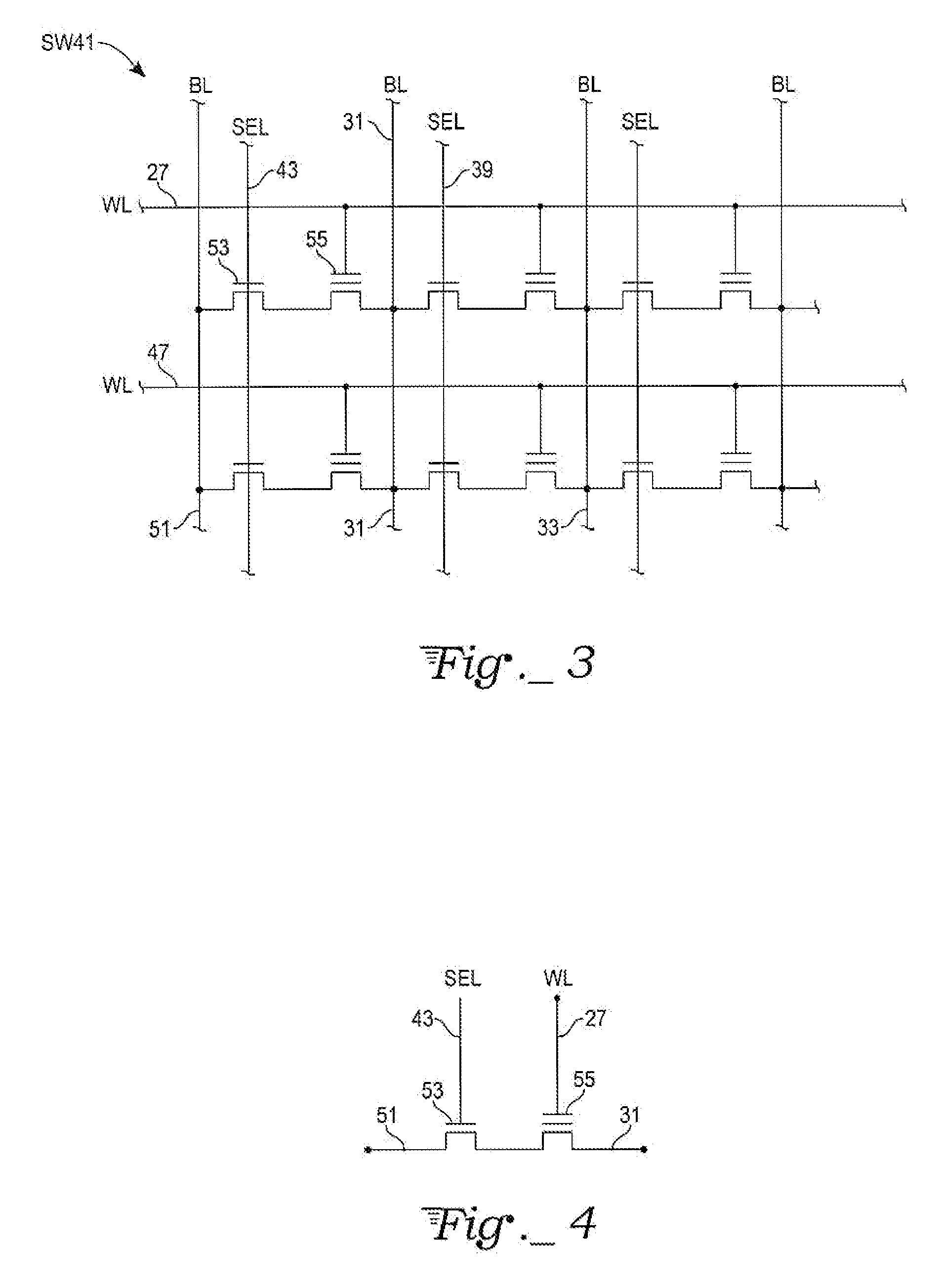Eeprom memory array having 5f2 cells
a memory array and eeprom technology, applied in the field of nonvolatile electrically eraseable and programmable memory arrays, can solve the problems of increasing manufacturing complexity of vertical transistors with moderate manufacturing complexity, devices cannot be 4f2 devices,
- Summary
- Abstract
- Description
- Claims
- Application Information
AI Technical Summary
Benefits of technology
Problems solved by technology
Method used
Image
Examples
Embodiment Construction
[0014]With reference to FIG. 1, the non-volatile memory transistor cell 11 is shown to be built upon a P-type semiconductor substrate 13 that is preferably a wafer substrate. While the transistor cell could be built within a P-well isolation region, the present invention features a lack of isolation structures, including structures that normally define an active region. In transistor memories, a cell is defined as a data storage unit. In some memories, the cell is occupied by a single memory transistor while in other memories, where grater address selectively is needed, as in the present invention, the cell is occupied by a memory transistor and a select device. In the present invention, the combination of a memory transistor and select device is handled by a split gate memory transistor.
[0015]Source-drain 15 and source-drain 17 are shallow N+ implanted regions in substrate 13. The term “source-drain” is used for subsurface device electrodes because there is no distinction in constr...
PUM
 Login to View More
Login to View More Abstract
Description
Claims
Application Information
 Login to View More
Login to View More - R&D
- Intellectual Property
- Life Sciences
- Materials
- Tech Scout
- Unparalleled Data Quality
- Higher Quality Content
- 60% Fewer Hallucinations
Browse by: Latest US Patents, China's latest patents, Technical Efficacy Thesaurus, Application Domain, Technology Topic, Popular Technical Reports.
© 2025 PatSnap. All rights reserved.Legal|Privacy policy|Modern Slavery Act Transparency Statement|Sitemap|About US| Contact US: help@patsnap.com



